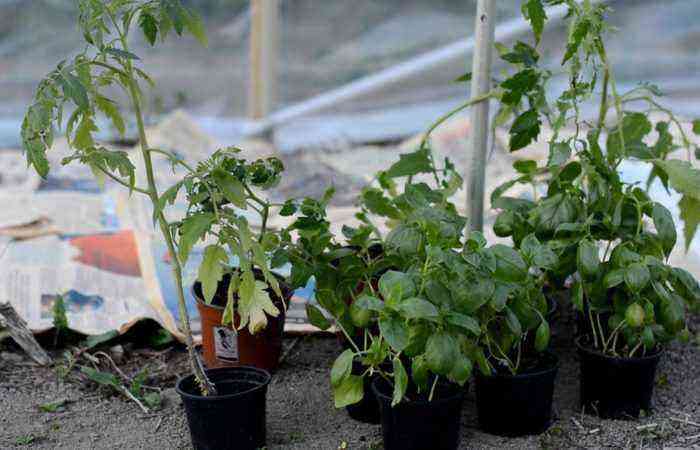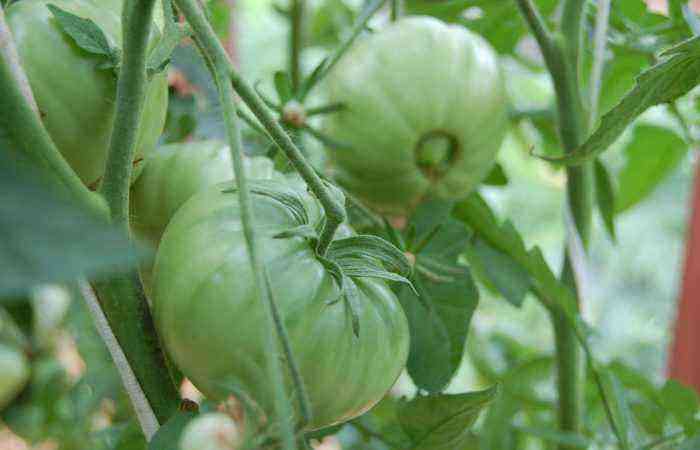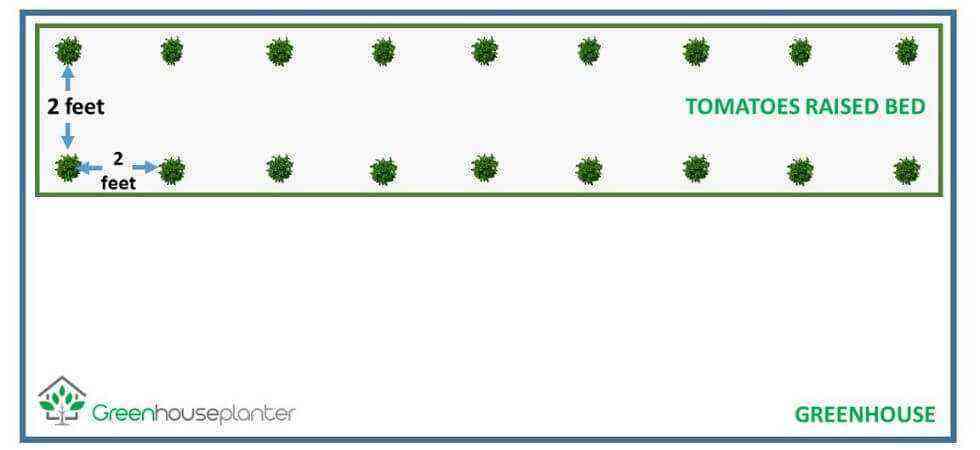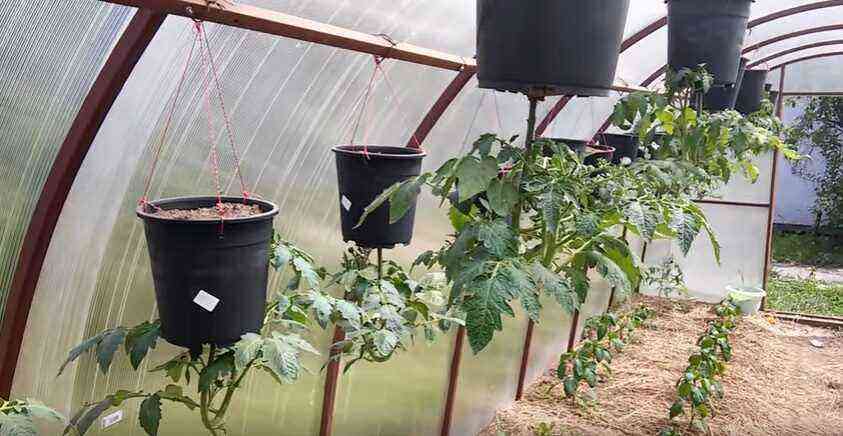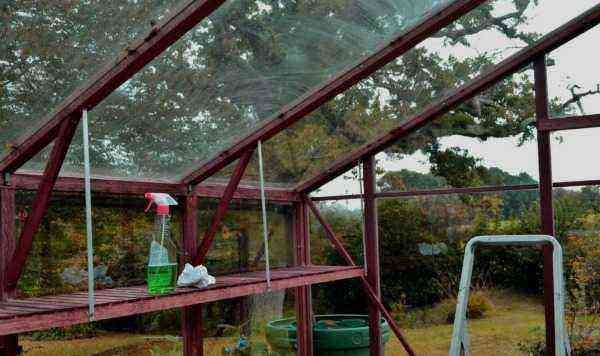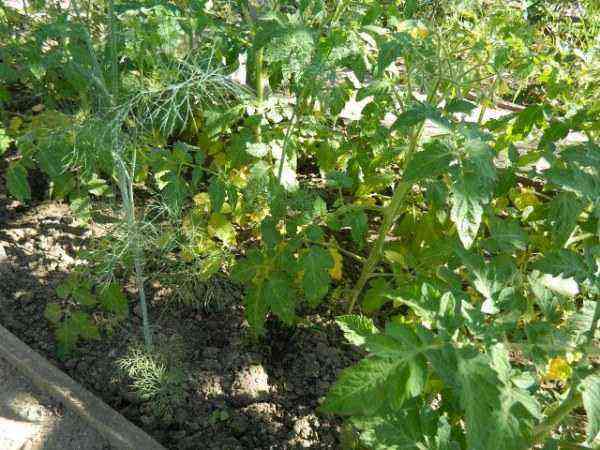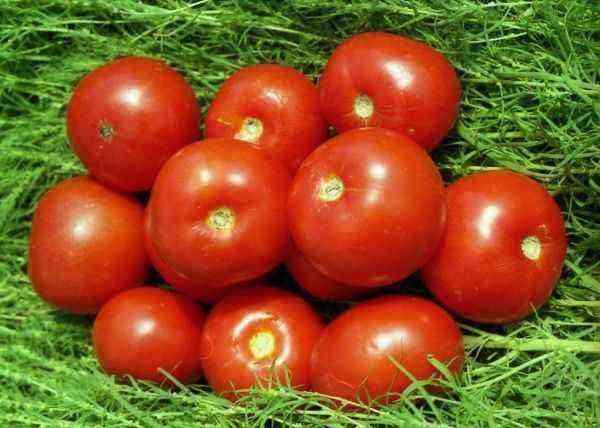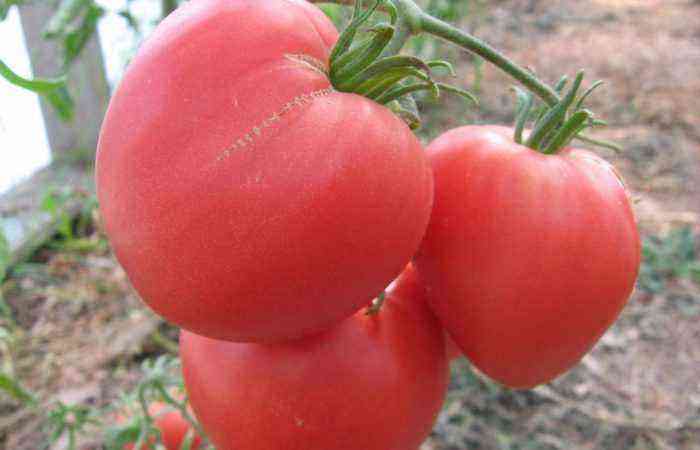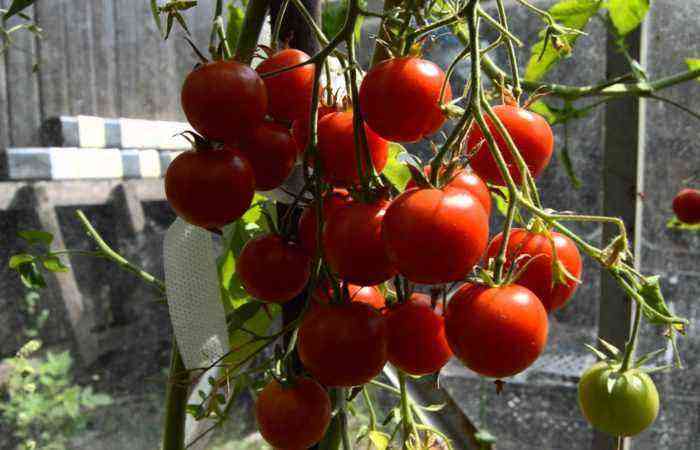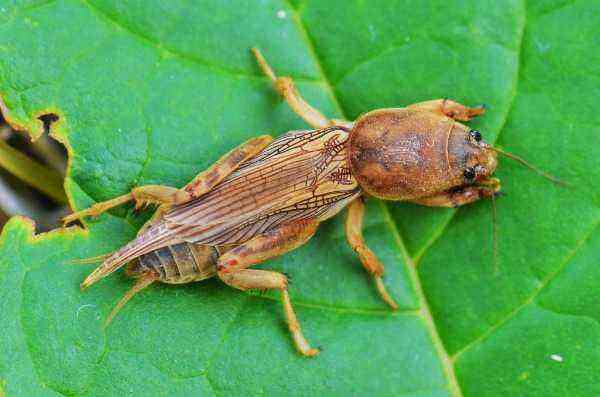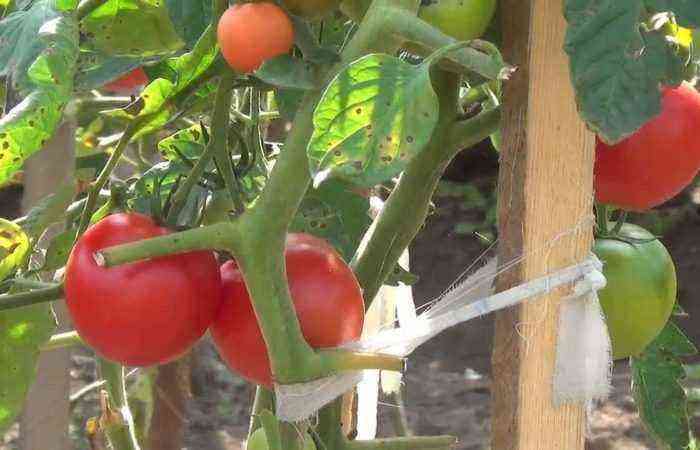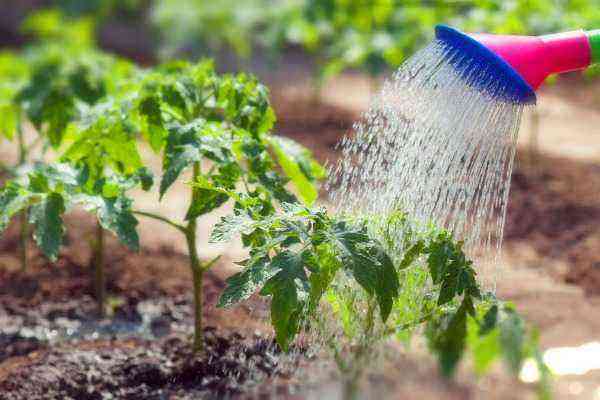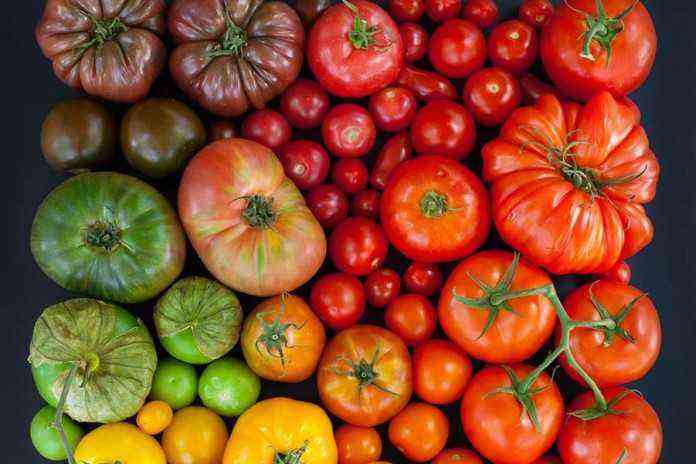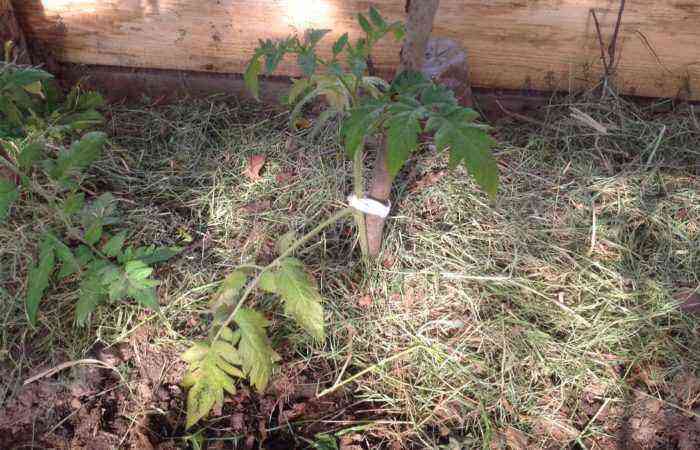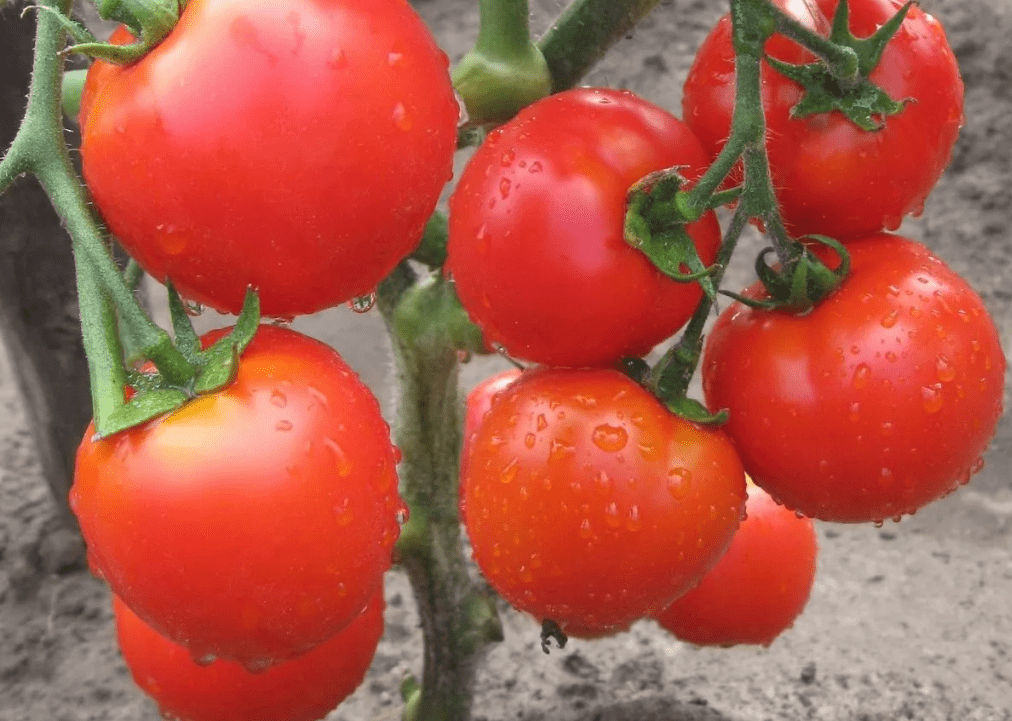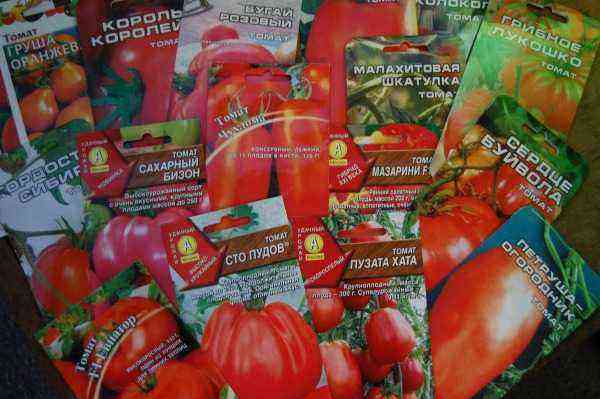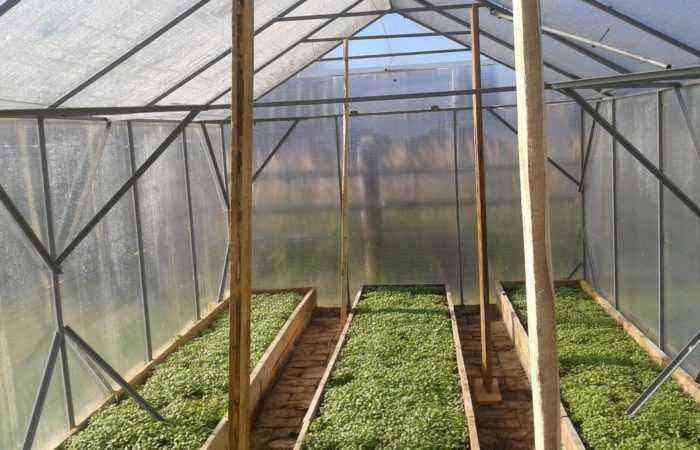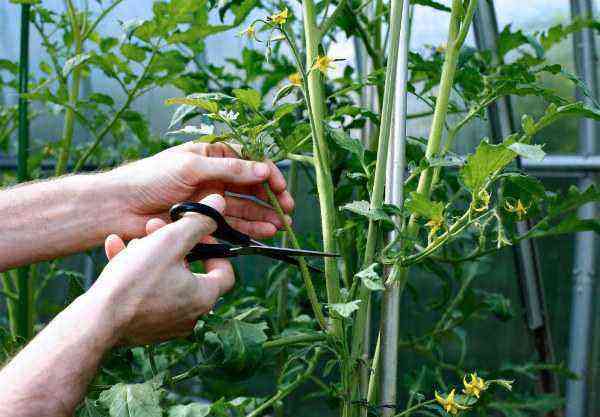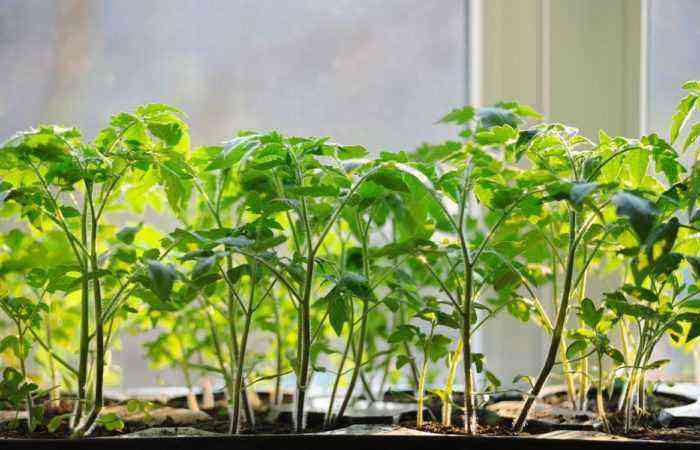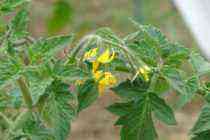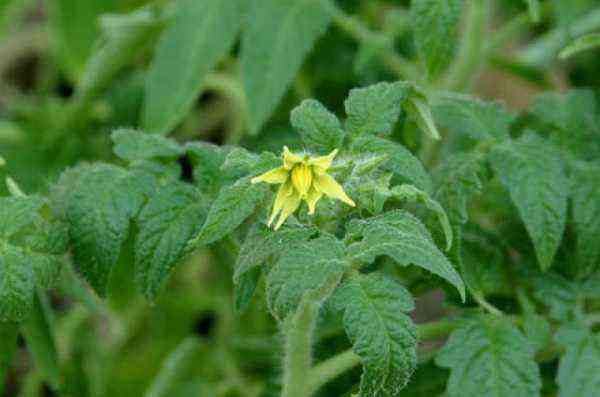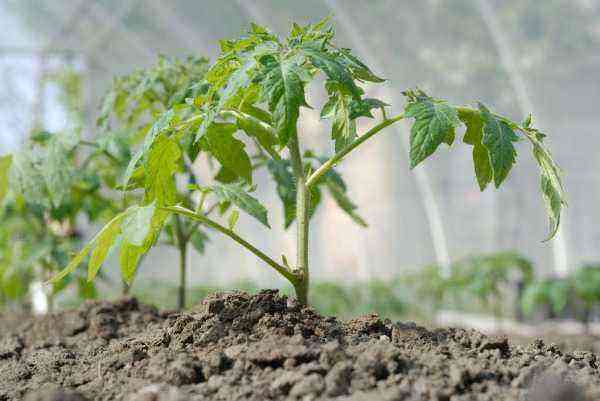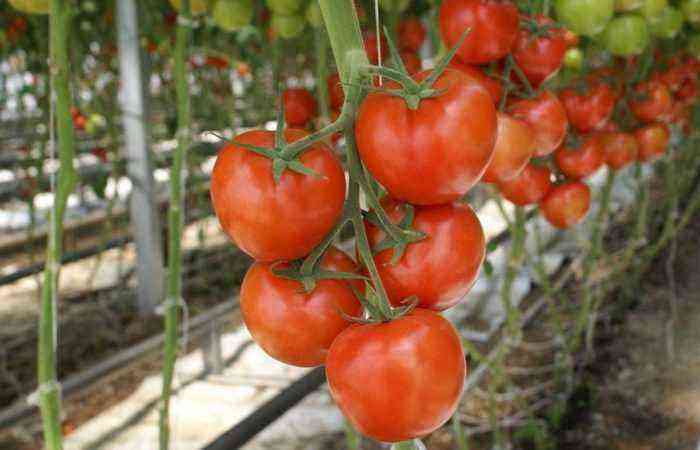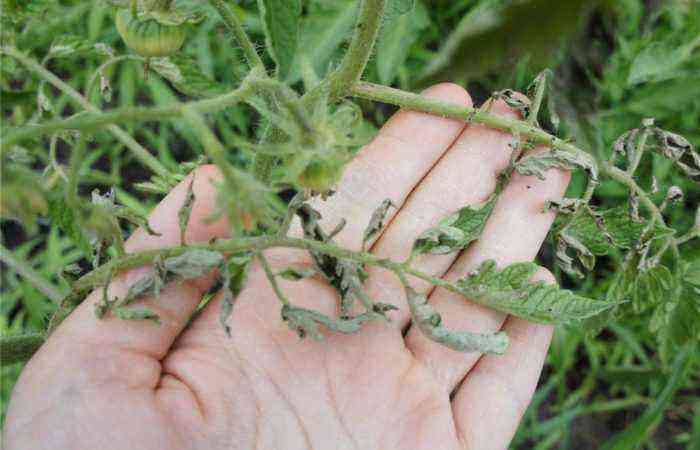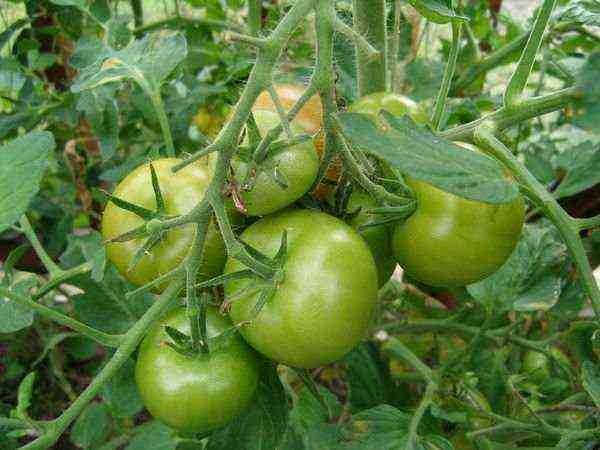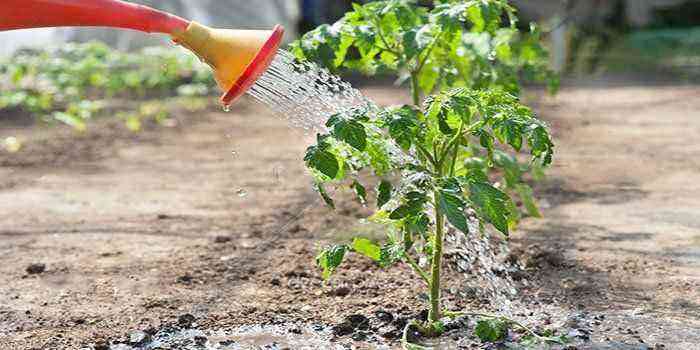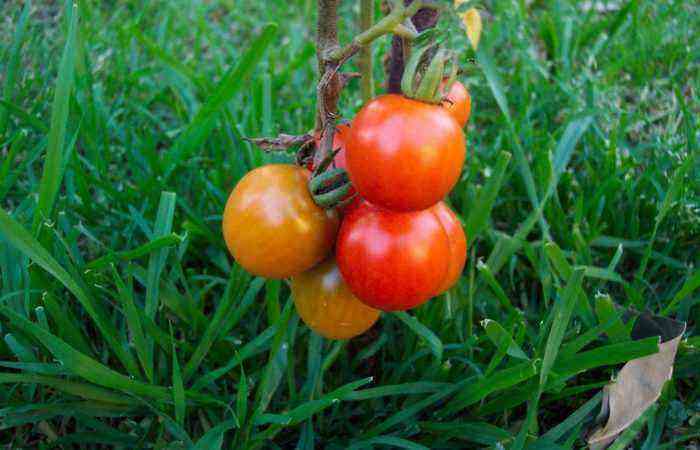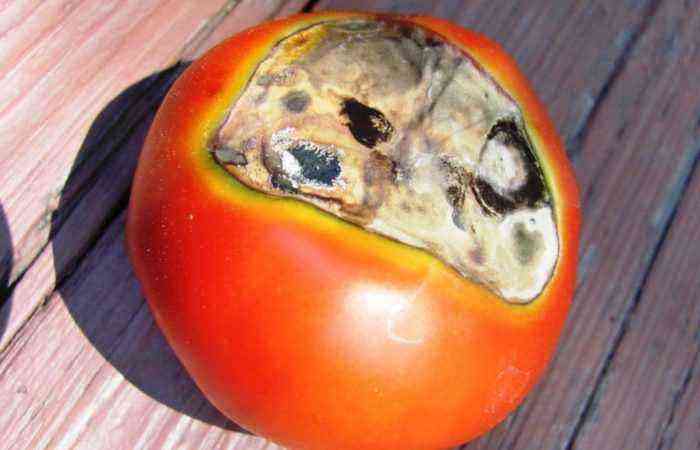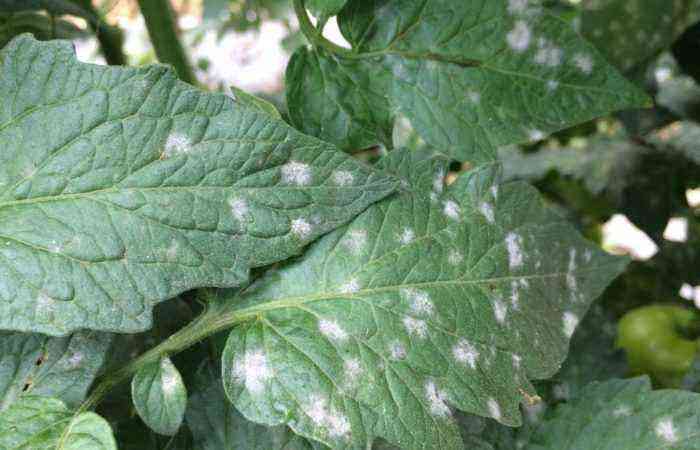Violation of the rules of agricultural technology leads to diseases of garden crops. Tomatoes are especially sensitive to growing conditions. Here is a description of the most common diseases and recommendations for their treatment.
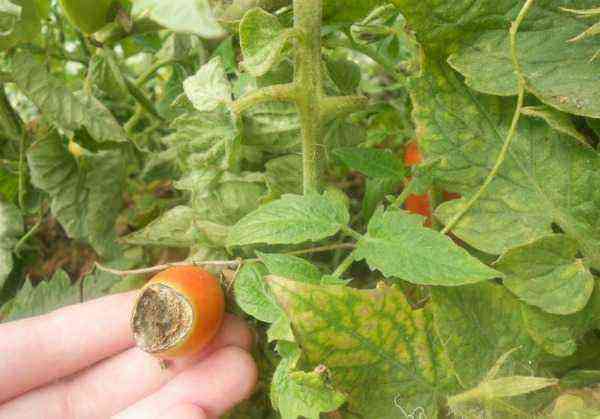
Some varieties are sensitive to a lack or excess of fertilizers, others do not like the irrigation regime, and the infection has reached the third through weeds weeded at the wrong time. Each problem has its own signs, and they need to be able to distinguish. Otherwise, all the efforts applied to the treatment will be in vain.
The main diseases of tomatoes with a photo, description, treatment
Name
Evidence
Methods of treatment (prevention measures)
chemical folk
Mosaic
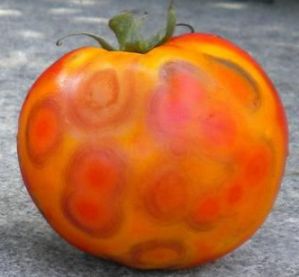
The virus totally infects the plant and is manifested by the variegation of the leaves. Among the light and dark green spots, you can sometimes see yellow ones. The disease cannot be treated, because the infected seeds are to blame. Only their dressing will help to avoid the development of infection. But diseased bushes will have to be completely removed from the site
Bacteriosis

The first sign is a sharp wilting of the bush. If you break the stem, you can see a cavity filled with liquid. The walls inside are covered with a brown coating. The affected plant cannot be cured – only to slow down the infection process. Therefore, it is better to remove the bushes, and subject the neighboring healthy plants to processing using the Fitolavin-300 solution.
wet rot

Initially, yellowness appears on the tops of the leaves. The spot gradually grows, filling the entire plate. Then it becomes dark gray or brown and becomes weepy. Then the disease moves to the stem, capturing the growth point. An unpleasant odor emanates from a diseased bush In the early stages, the bushes are sprayed with Bordeaux liquid (5%) or ferrous sulfate (10%) Folk remedies do not give an effect
The disease in the advanced stage is not treated – the bushes are pulled out and destroyed. The soil and the remaining plants are treated with the indicated preparations.
stem necrosis

A viral disease manifests itself during the formation of the first brushes. In the lower part of the bush, you can see dark green cracks, from which the beginnings of aerial roots hatch. Then the leaves wither, the bushes begin to fall. The virus affects the seeds, and the soil can be the source. Therefore, the bushes cannot be saved, they must not only be removed from the garden, but also burned. The soil is treated with Fitolavin (2%)
macrosporiosis
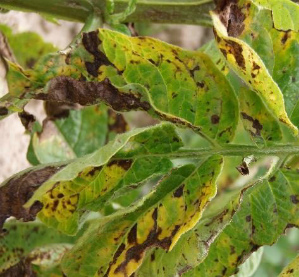
The disease begins from the lower sheets – zonal-concentric large brown spots appear on them. Increasing in size, they merge, completely capturing the plate, which immediately fades. Gradually, the fungus passes to the stem, sometimes affecting the fruits, provoking rot. Before the appearance of the ovaries, the bushes are treated with Ridomil Gold or Skorin. When fruits appear – with any biological product. In the early stages, you can slow down the disease with a decoction of horsetail or an infusion of erect marigolds. Bushes need to be sprayed every 5-7 days
Fitoftoroz
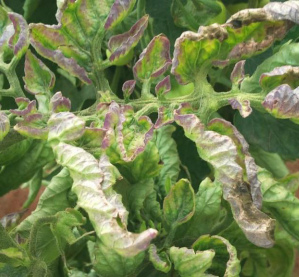
The most common crop disease, manifested by blackening and drying of the leaves. Then the spores pass to the fruits, covering them with dark spots. The main cause of the disease is high humidity. For the prevention and control of the fungus, Barrier, Zaslon, Fitosporin are used. Whey, which is sprayed with bushes once a week, blocks the spread of spores well.
Eliminate the causative factor will help drip irrigation beds
Curly
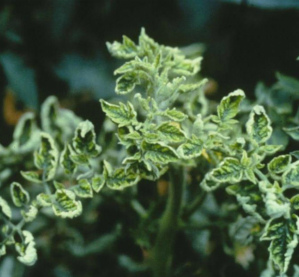
The bush slows down in growth, takes on a chlorotic appearance, standing out with yellow leaves. The apical plates on the bushes become curled. The seeds are affected, therefore, for prevention, they are disinfected before planting. Sick bushes are best removed – they are not treatable
Cladosporiosis
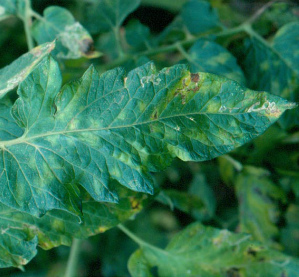
The spores of the fungus settle on the underside of the leaves and look like a velvety brown coating. The upper part of the plate is covered with rounded yellow spots, rapidly growing. As a result, the leaves begin to curl and dry out. If the lesion affects the fruits, they turn brown and soften Apply preparations containing copper – Bordeaux liquid, “Barrier”, “Barrier” Recommended infusions of herbs (horsetail, marigolds) with the addition of laundry soap or washing powder without granules Before processing, the affected parts of the bush are removed. Adjust temperature and irrigation regimes
Mučnistaâ rosa
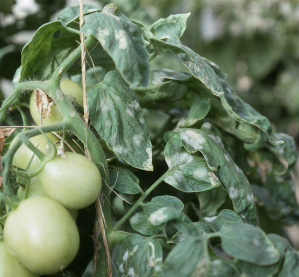
You can recognize the disease immediately by a grayish powdery coating on the stems and leaves. The plant lags behind in growth, leaves and shoots lose their shape and gradually die off. Solutions of Bordeaux liquid, ferrous sulfate, soda ash, colloidal sulfur, copper oxychloride are recommended. A good result is given by such drugs: “DNOK”, “Keltan”, “Lecithin”, “Oksihom”, “Figon”, “Ftalan”, “Fundazol” Spraying the bushes with infusions of mullein, marigolds, decoction of horsetail helps
You can also water the bushes with water with the addition of whey (backwash) in a ratio of 9: 1
Plants should be transferred to a “diet” – exclude fertilizing with nitrogen content
Peronosporoz

This disease is often confused with powdery mildew, but in this case, the plaque is provoked by a different type of fungus. Distinctive features:
– flour appears only on the underside of the sheets
– oily spots form on the top, gradually turning yellow
With a significant defeat, the plant sheds foliage
The same preparations are used as for the treatment of true powdery mildew.
septoriosis

Popularly called white spotting. First, small single spots appear, in which the center is lighter than the edges. Subsequently, a black dot forms in the middle. Affecting the leaves, the fungus passes to the petioles and stems. As a result, the plant turns brown, the leaves fall off. The sooner you start treatment with drugs (Horus, Zineb, copper oxychloride), the more likely you are to get a crop
Other systemic fungicides will work
In the treatment of fungal diseases, a decoction of horsetail and an infusion of tagetes (marigolds) help well.
Gray mold

The disease captures the entire ground part of the plant, first manifesting itself as weeping brown spots. For 8 hours, spores cover the entire bush with ash-gray powder, slick to the touch. Use Bordeaux liquid or any copper-containing preparation. For prevention and in the initial stage of the disease, spray with infusion of garlic.
Blackleg
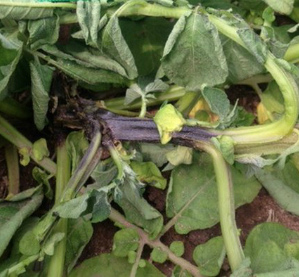
It will not be possible to notice the onset of the disease – the lesion begins with the root neck. The lower part of the stem gradually darkens, becomes thinner, rots and the plant dies within a week. It will not be possible to stop the disease, but it can be prevented by preventive measures:
- disinfection of seeds and soil
- backfilling beds with sand
- watering the soil with manganese solution
- compliance with agricultural practices
Vertex Rot
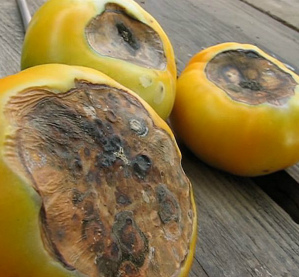
Only fruits are affected, on top of which dark spots can be seen. This is not an infectious disease, but a physiological one, caused by a violation of agricultural technology (in particular, the proportions of fertilizing are not maintained) Spraying bushes with calcium nitrate or watering under the root with Brexil Ca For prevention, pour eggshells and onion peel into the wells before planting seedlings
edema
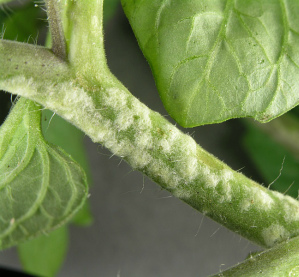
The disease is not contagious – the reason lies in the violation of irrigation conditions. The problem is manifested by swelling of the leaves and stems. Convex spots look like white mold. With a continuous bloom, leaves and stems can break. Treatment comes down to normalizing growing conditions:
in the greenhouse:
- normalize air humidity
- maintain the desired temperature
- increase illumination
Verticillosis
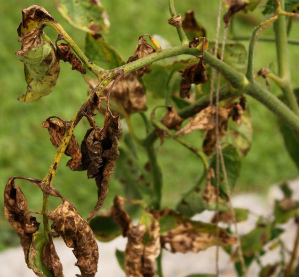
Suddenly, for no apparent reason and the absence of yellowing of the leaves, they begin to wither. Then the lesion passes to the branches. This fungal disease cannot be treated. The plantation is destroyed, and the land is disinfected with formalin 40%, Bordeaux liquid (5%) or lime, using 100 g of the product per 1 sq.m.
Fuzarioz
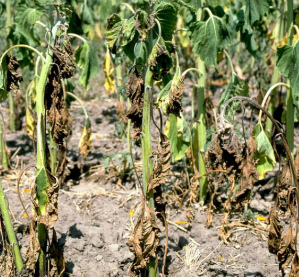
The fungus affects the roots with the capture of the neck, which turns black. The lower leaves and stem turn yellow, the bush gradually withers and dies. Sporonoses are pinkish pads
You should not even try to treat the plants – the bed is completely destroyed (it is better to burn it). The soil is treated with systemic fungicides, formalin, granosan. You can supplement the disinfection with ferrous sulfate, copper chloride or Bordeaux liquid
The next year it is not recommended to plant crops in this place.
Rust
The leaves are first covered with yellowish dots. Then they turn into rust spots. At the same time, dusty yellowish pads can be seen on the lower leaf plate, changing color to black by the end of the growing season. Organs affected by rust are deformed Use copper chloride, soda ash, iron sulphate and systemic fungicides
Infusion of Chernobrivtsi (marigold) leaves is sprayed with tomato bushes
For prevention purposes, before planting, the roots of seedlings are disinfected in infusion for several hours.
Having discovered any of the diseases described, it should be borne in mind that delay in treatment is undesirable – viral and bacterial infections spread quite quickly.
Sometimes it takes a few hours to move to the next bed. There are no effective remedies for this type of disease.
Therefore, sometimes it is more reasonable to simply destroy the affected plantation in order to save neighboring crops. But this does not mean that you should give up – in the early stages, the plant can still be saved. If the measures taken have not yielded results, diseased plants are burned, the soil is disinfected.
As for fungal diseases, here the forecasts are more favorable. With good (and timely) therapy, even plants with a 50% damage rate survive. In this case, there is no need to destroy the bush itself – only the affected parts are removed. But the whole plant, the soil around and neighboring bushes are necessarily processed.
Many fungal diseases can be avoided by strict adherence to crop rotation and agricultural practices. An important role is played by pre-planting disinfection of seeds and disinfection of seedlings.
Features of tomato diseases
Plant development is influenced by growing conditions. In an artificial climate, crops develop differently than in open ground. Therefore, diseases will manifest themselves in different ways.
In the greenhouse
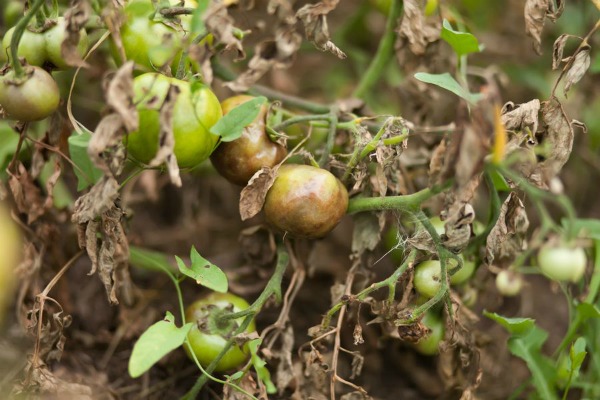
Cultivation buildings are characterized by higher humidity and air temperature than outside. When creating acceptable conditions for growing tomatoes, one should not forget that this climate is also suitable for the active reproduction of bacteria.
In greenhouses, the migration of fungal spores and viruses from bush to bush manifests itself faster than in open beds.
It is comfortable in such conditions to exist for pests, which are the main carriers of diseases.
The following factors lead to the emergence and spread of diseases in enclosed spaces:
- use of cold water for irrigation;
- prolonged waterlogging or overdrying of the soil;
- air humidity unsuitable for this crop;
- application of dry fertilizers under the bushes;
- overfeeding with nitrogen preparations;
- poor ventilation of buildings.
The spread of fungal diseases is also facilitated by a faulty roof, on which moisture accumulates. Cold drops falling on tomato leaves increase the likelihood of damage.
It is also necessary to take into account indicators of humidity and temperature, which create risky conditions for the development of certain diseases:
- fuzarioz – begins to appear at 25-28 degrees Celsius against the background of low soil moisture;
- verticillosis – bushes wither at 16-20 degrees and dry soil;
- blackleg – manifests itself if within 2 weeks, with waterlogged soil, the soil temperature is below 18 degrees, and the air is below 16;
- gray rot – plants are affected by the disease if, in cloudy cold weather outside the window in the greenhouse, no higher than 16-18 degrees of heat is maintained;
- mučnistaâ rosa – will develop if the humidity in the room is above 85%, and the air temperature is kept below 20 degrees;
- fitoftoroz – low temperatures (14-23 degrees) with a humidity of more than 75% also contribute to it.
From this list, we can conclude that it is important to maintain optimal conditions in cultivated structures in order to protect the garden from infection by fungi, viruses and bacteria.
In open ground

If it is realistic to maintain the necessary conditions for growing tomatoes in a greenhouse, then in open beds you have to rely only on favorable weather.
Therefore, the main agrotechnical measures are aimed at:
- for irrigation;
- timely feeding;
- pest and weed control.
In open beds, some greenhouse diseases almost do not appear (for example, cladosporiosis or black rot). But mosaic and powdery mildew are frequent “guests” of vegetable gardens.
In addition, the condition of the plants is influenced by sudden changes in temperature (day – night), the sun’s rays (probability of burns), strong winds, and rainy summers.
Prevention of tomato diseases
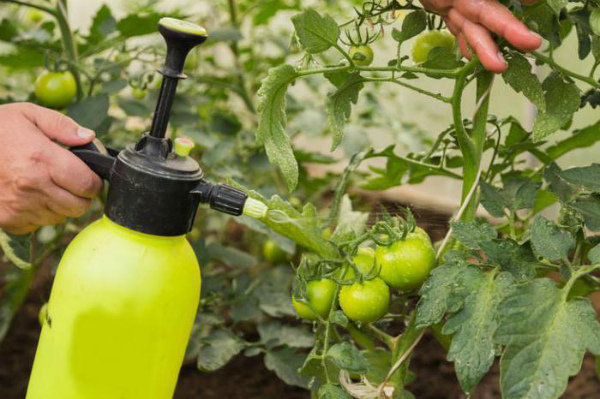
A prerequisite is preventive measures, which should be regular.
Preventive measures
Activities Features Disinfection of seeds Planting material is the most common carrier of many diseases. Pathogens can be transmitted both genetically and penetrate seeds during storage. Therefore, the pickling method is used, using a solution of potassium permanganate or minium, sulfur, etc. You can also carry out thermal disinfection by soaking the seeds for an hour in warm water (50 degrees) Disinfection of structures Measures are carried out before the final cleaning of plant residues, which allows you to destroy as many pests and pathogens as possible Dry post-processing is based on fumigating the greenhouse with sulfur Wet disinfection is carried out with aqueous solutions of chemical drugs – karbofos and chloroethanol. It is possible to use more modern means, treating not only the surfaces of the greenhouse, but also other structural elements, containers and inventory. Chemical protection Plants are treated with preparations, regardless of whether they are affected or not. General purpose tools are used in combination with highly specialized
Even if the season passed without problems, and not a single plant got sick, it is recommended to replace the soil by the next planting date or thoroughly ignite the existing one.
Diseases of tomatoes and their treatment – video
Wherever tomatoes are grown, increasing plant immunity is a must. Resistance to disease damage is achieved by creating development comfort with the help of agrotechnical measures. They are complemented by prevention and the right methods of treatment.


